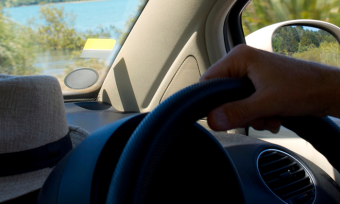Inexperience and poor decision making are major contributors to younger drivers having a greater likelihood of a car crash. Alarmingly, New Zealand has the second highest death rate in the 15-24 age group, out of 29 comparable countries, according to AA. The greater crash risk for this age group means insurers tend to err on the side of caution when setting policies for drivers under the age of 25. So, Canstar wanted to look at how car insurers treat policies for younger drivers, as well as what drivers should consider when choosing a policy.
How your parents’ business relationship can help you get insured
Most insurers will take into account any existing insurance relationship they have with your parents. For example, if you live at home and are the primary driver of a car your parents own, then you can take out a policy in your parents’ name, but put your name down as the principal driver. This should mean you get a lower premium (a premium is essentially the cost you pay for your insurance) than you would by signing up for car insurance in your own name. Setting up insurance via your parents’ account could also give you access to no-claims bonuses, as well as discounts for having multiple policies with the same provider.
Putting your name down as the primary driver will help you to start establishing your own insurance record. This means, when you later replace the car and get insurance in your own name, you will usually be able to receive the same full insurance discount that you had with the previous car. Be aware, though, each insurer treats policies for younger drivers differently, so make sure you check the details with any car insurance providers.
Understand the different categories of car insurance and any exclusions
When selecting car insurance, it’s important to understand what the different types of car insurance are. Each type has different level of cover, which could make a big difference in terms of how much financial cover you have, in the event of a crash or car accident.
Here are the main types of cover, but make sure you check back with insurers on specific policy details:
Comprehensive car insurance
A comprehensive car insurance policy is the most common type of motor vehicle insurance as it provides the highest level of cover for its customers, however, it can also be the most costly. This type of car insurance will pay, not only for loss, theft or damage to your vehicle, but also for any accidental damage to the other party’s vehicle or property, if you were at fault. If your car is financed, then having comprehensive car insurance is highly recommended. Many comprehensive policies also include provisions for lost or stolen keys, windscreen and window protection as well as no-claims bonuses and no-excess options.
Third party car insurance
Third party car insurance cover is the most basic and often the cheapest form of car insurance available in New Zealand. This type of insurance does not cover any damage to your vehicle. Instead, it only covers damage caused by you to another person’s vehicle. Third party car insurance can be a cost-effective option for car owners who only drive sporadically, or cannot afford to keep up with higher premiums.
Third party fire and theft car insurance
Offering a step up from the basic ‘third party’ package, third party fire and theft car insurance is popular in New Zealand because it costs less than comprehensive car insurance premiums, but still provides drivers with substantial cover. This type of car insurance insures you if your car is stolen and needs replacing, if your car catches on fire, and pays for repairs necessitated by damage to a third party. This type of cover can also cover any damage to your vehicle that is caused by a natural disaster.
Under 25 car insurance NZ: how do insurers set their prices for young drivers?
As we mentioned above, every car insurer has their own regulations when setting policies, including for drivers under the age of 25.
We had a look at some of the insurers on Canstar’s database, to pull out some examples of how providers treat policies for drivers under the age of 25.
According to State’s website, if you, or a driver of your car is under the age of 25, then you will have to pay an age-related excess if the young driver is involved in an accident while driving the car. Factors such as the exact age of the driver and the licence type they hold will impact on the final cost.
According to AMI’s website, it has a policy specificically for drivers under the age of 25. Under this agreement, AMI will give young drivers at least a 50% No Claims Bonus when you take out a Comprehensive, Third Party Fire & Theft, or Third Party car policy. The No Claims Bonus applies to the premium amount excluding any optional covers and it does not apply to government levies or GST.
AMI also provides a discounted Breakdown Service when you take out comprehensive car cover, and offers a multi-policy discount if you also take out renter’s insurance with the provider.
If you are taking out multiple insurance policies with any provider, for example car insurance and renter’s insurance, it is a good idea to check whether they will offer multi-policy discounts. After all, your business is valuable to them.
Parent trap: what should parents know about adding children to their policy?
If you’re a parent of child under the age of 25 – and you want to support them with their car insurance policy – then there are a few things to keep in mind.
For example, some insurance policies will exclude drivers who are under the age of 25 and have an accident while driving your vehicle, unless they have been specifically added to the policy. On the other hand, some insurers recognise that there are times younger drivers may need to use your car – even if they haven’t been named on your policy – so will cover these instances if something does go wrong. But, again, expect there to be separate excess payments.
Car insurers may also require you to let them know about any driver who has had traffic infringements, licence breaches, or have an overseas licence.
These points are certainly not to discourage you from supporting your child with car insurance, but just to help you to know what to look out for, so you can make an informed decision.
Do your research on how easy it is to make a claim, receive support
As with any product where you need to fork over money, it’s normal to have the price top of mind. But Canstar urges caution against choosing a policy purely on cost. In some cases, the cheapest product may also be the most suitable for you. In other cases, you’ll find yourself caught out at a time when you really need it because your budget policy doesn’t cover you for what you need. Your best bet to secure a car insurance policy that works for you is to make sure you work out what you need from a policy and provider and then do your research to see who offers that.
It’s also important to get an idea of customer’s experience with various providers. That way, it will help to give you more confidence that you’ll have the support, should you need it down the track. Canstar surveys New Zealanders to find out their level of satisfaction with New Zealand car insurers. To access these customer satisfaction ratings, for free, just hit the button, below.




Share this article